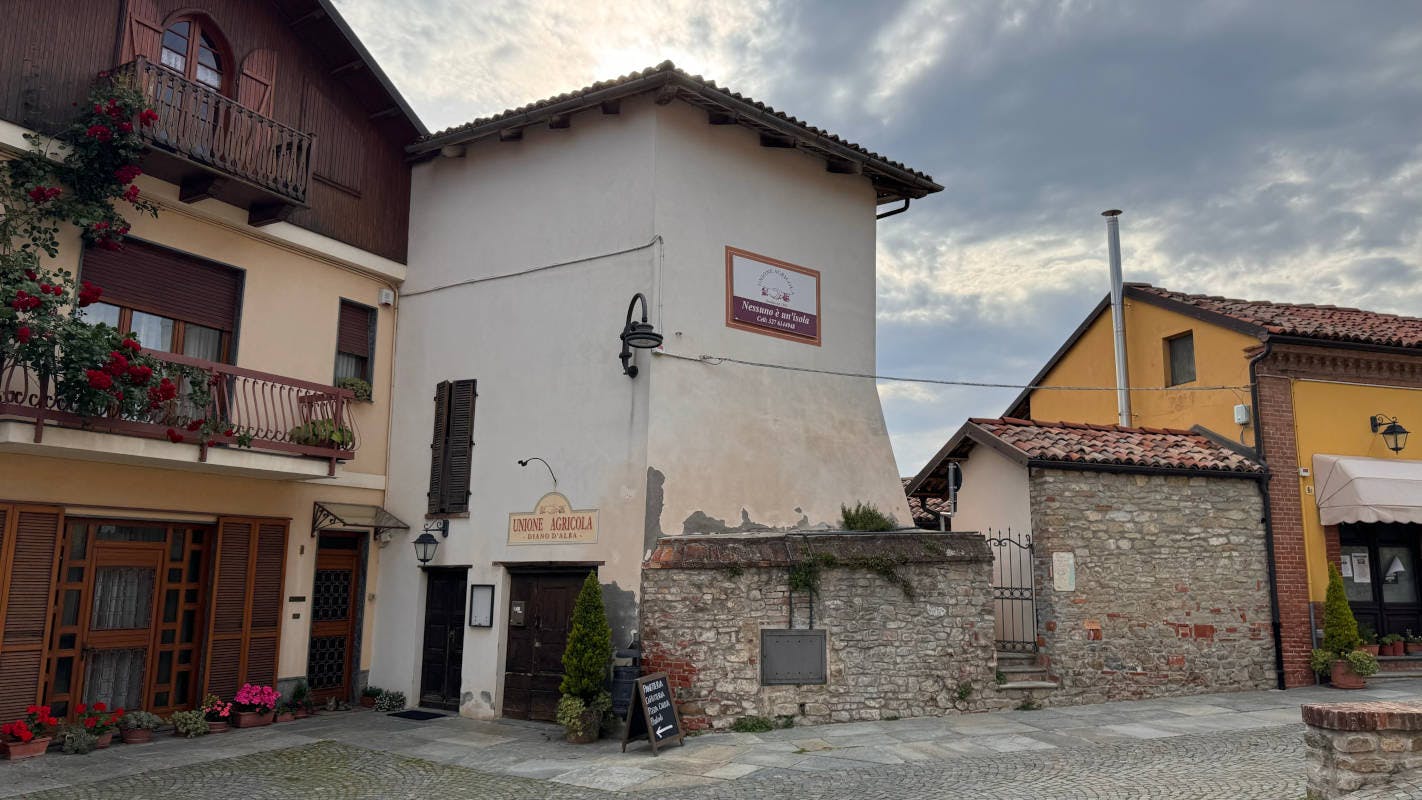
The Drawbridge - The Agricultural Union
23 / 26
The drawbridge at the Borgo Castellero
Even today this place is called "The Bridge". We are, in fact, near the main access to the Castle where the drawbridge was located which lowered onto the canal full of water right where the current Via Umberto is. The climb to the Church was once the climb to the Castle located where the current Belvedere is located. Around the Castle there was a small church and some houses in which the castle's staff lived, making up the Borgo Castellero, surrounded by protective walls. The Castle was semi-surrounded by a canal with water where the current Via Umberto is to create further difficulties in a possible attack. There was a second entrance to the castle called "Usat" on the opposite side to this one, near the "Scarun" slope.
The bridge guardians responsible for opening and closing maneuvers lived in these rooms. In 1632, after the demolition of the Castle, the canal was drained, creating a transit route. In 1882 the association of the Agricultural Union was born in these premises.

Agricultural Union
In 1882 the lawyer Giacomo Oddero revolutionized the fortunes of the town by founding a mutual aid society called Unione Agricola which was based in these premises. One of the first objectives of the Agricultural Union was the organization of evening courses for adults to learn to read and write. Subsequently, agricultural education courses were established in which cultivation methods and principles were taught.
A welfare warehouse was also established with the joint purchase of agricultural tools and plant protection products for the vines, fertilizers and seeds at decidedly competitive prices compared to individual purchases. In 1886 an agricultural club was created which functioned as a meeting and aggregation place and a music school; in short, the musical band of the Agricultural Union was born. There is a need for liquidity both in carrying out community purchases but also in fighting the plague of usury, one of the most serious problems for farmers in the Langhe.
In that period, a hailstorm or sudden illness is enough and it immediately becomes necessary to resort to loan sharks who very often end up taking the property away with very high interest rates. The attention of the lawyer Giacomo Oddero turned towards the rural loan banks, so on 17 October 1886 the "Cassa di Prestiti dell'Unione Agricola" of Diano d'Alba was established, which became the first rural bank in Piedmont and one of the first in Italy.
In 1893 the "Cassa di Prestiti dell'Unione Agricola" ceased its activity to start again on a more solid basis and in the town, after the debate between liberals and Catholics, a "Cassa di Credito Cattolica" was founded. Shortly afterwards the "Cassa dell'Unione Agricola" will also start again, giving Diano the distinction of having two credit banks. At the height of its credit activity, the Cassa also printed its own paper money. He also overcame the financial crisis of 1929 without major problems, while the same could not be said of the "Cassa Cattolica" involved in the bankruptcy of the "Cassa Rurale di Bagnolo".
The Agricultural Union became an after-work club based on the law of May 1, 1925 of the fascist regime, which established the national after-work club under the direction of the head of government, with the task of taking care of workers' free time. New impetus in the sixties with the appointment of the director Giovanni Berzia, who accompanied the slow but gradual growth of the Cassa rural di Diano for many years. He was later replaced by the directors Giacomo Battaglino and Gino Sobrino who further expanded the catchment area. Today's Banca d'Alba was formed with the merger of the rural and artisan banks of Diano d'Alba, Vezza d'Alba and Gallo di Grinzane Cavour.
- To find out more watch this video by Mario Proglio -